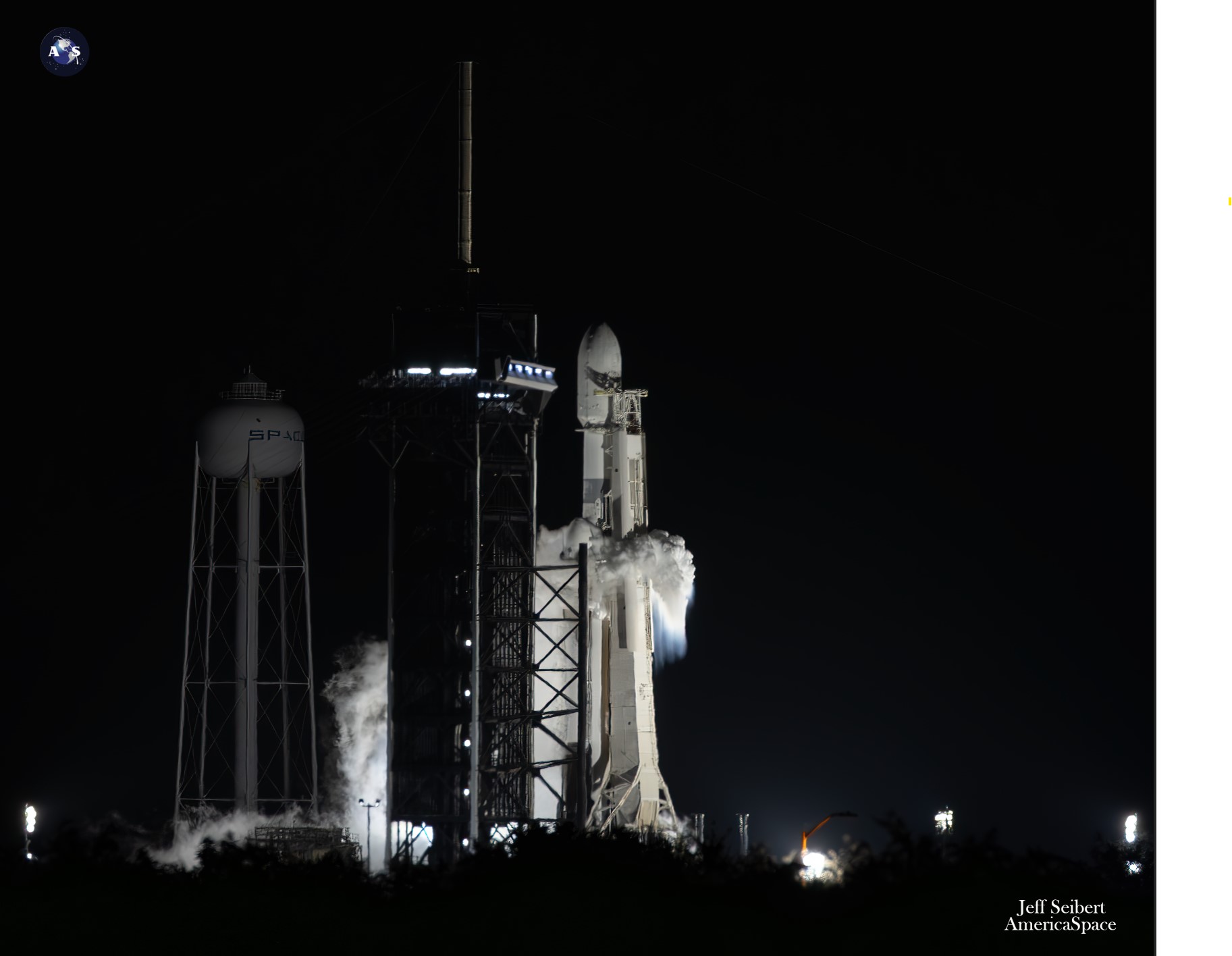
After calling a scrub at T-65 seconds yesterday, SpaceX may—just may—launch a pair of missions less than an hour apart later tonight, as a single-stick Falcon 9 heads uphill at 10:20 p.m. EDT from storied Space Launch Complex (SLC)-40 at Cape Canaveral Space Force Station, Fla., followed by a triple-barreled Falcon Heavy from neighboring Pad 39A at the Kennedy Space Center (KSC) during a “window” opening at 11:04 p.m. If achieved, this flight-to-flight cadence will set a new record of perhaps as little as 44 minutes for the shortest interval between pairs of Falcon-class rocket launches.
However, with the Falcon Heavy taking priority in terms of her customer payload, at the time of writing it remains to be seen if the two may switch in launch order. This may result in the Heavy launching first, followed by the Falcon 9 heading uphill on one of her three T-0 points, the last of which is timed a minute past midnight.
Original plans called for the two missions to fly just shy of 24 hours apart, with the Falcon Heavy and her heavyweight Jupiter-3 geostationary communications satellite cargo targeting liftoff at the start of last night’s 99-minute window, which opened at 11:04 p.m. Wednesday and closed at 12:43 a.m. Thursday. That would have enabled the Falcon 9 to roar uphill as early as 10:20 p.m. Thursday, laden with a stack of 22 downsized Starlink “V2 Mini” internet communications satellites to close out July on a record-tying eight launches.
But it was not to be. The Falcon Heavy—comprising a brand-new center core and the twice-flown B1064 and B1065 side-boosters—was elevated to the vertical on historic Pad 39A early Wednesday and progressed through a seemingly trouble-free countdown. With “startup” anticipated at T-1 minute, when the Heavy’s flight computers were due to take control of all vehicle critical functions, the countdown clock stopped a few seconds shy of the startup call and an ominous silence ensued.
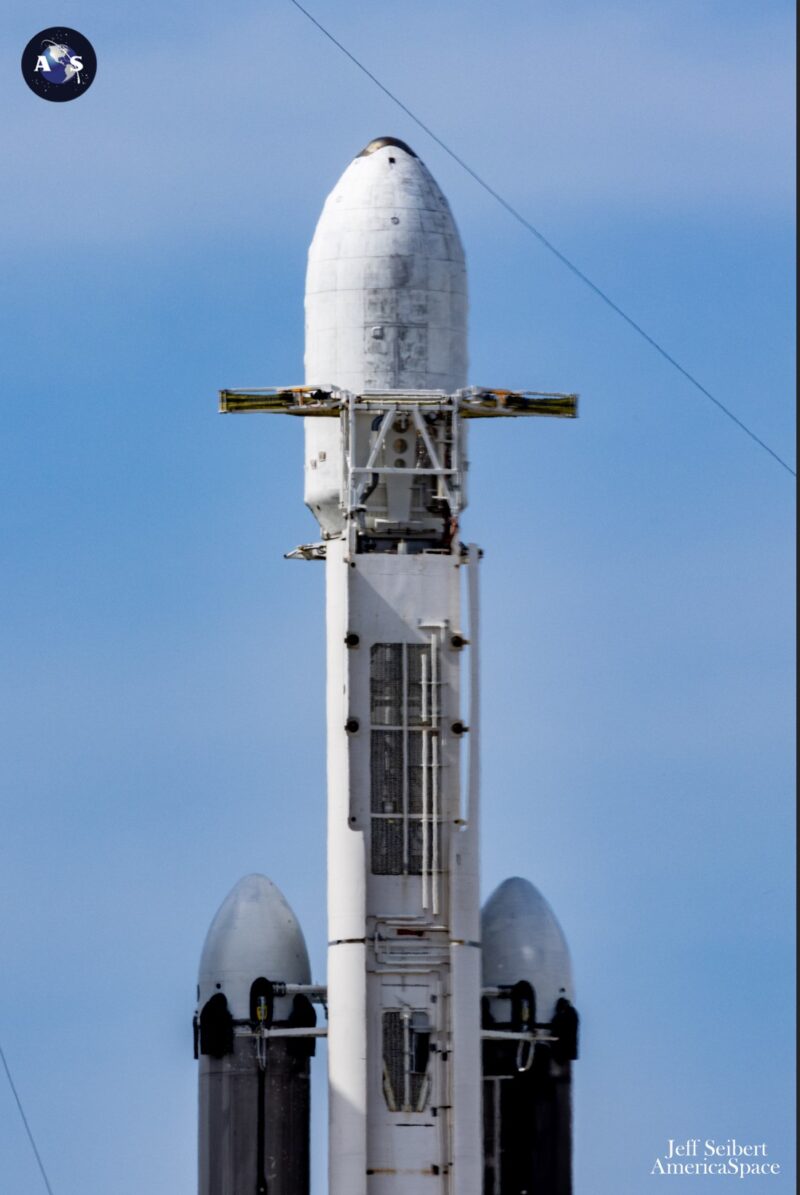
“Launch abort has started,” came the clipped call from the Launch Director.
Then, more silence.
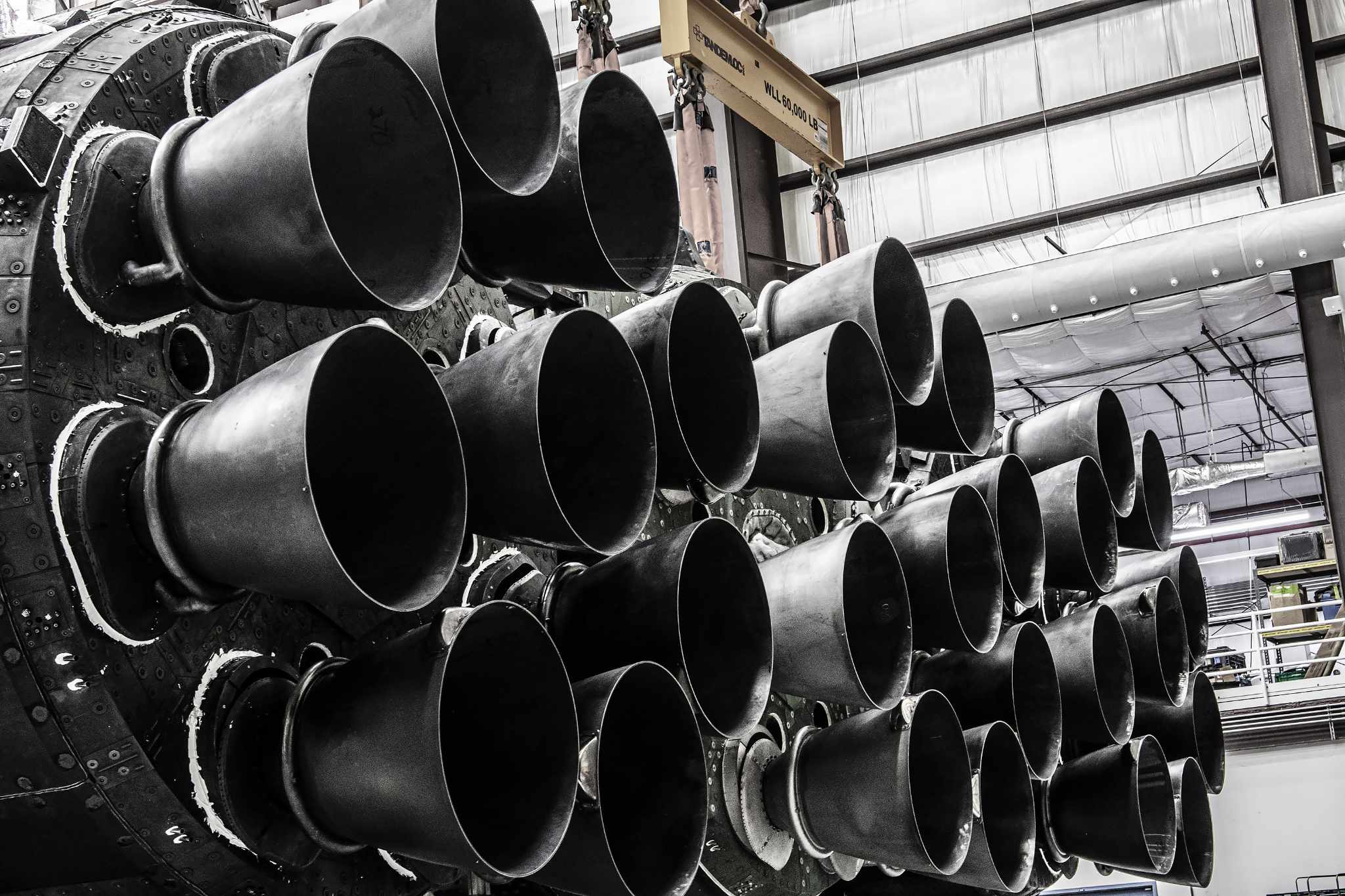
The clock quickly synched back to T-15 minutes and holding before the Launch Director returned onto the countdown net to declare a scrub for the night. “Violation of abort criteria,” SpaceX later tweeted as the reason for last night’s scrub, adding that “vehicle and payload are in good health”.
Teams moved directly into a 24-hour turnaround, aiming for a revised launch during a second 99-minute window, opening again at 11:04 p.m. Thursday. In the meantime, the single-stick Falcon 9 waiting on neighboring SLC-40 is still apparently on track to fly at 10:20 p.m. If both go on time, a new record of 44 minutes will be set between two launches, neatly eclipsing the current record of four hours and 12 minutes set by a pair of Falcon 9s out of Vandenberg Space Force Base, Calif., and the Cape, back in March.
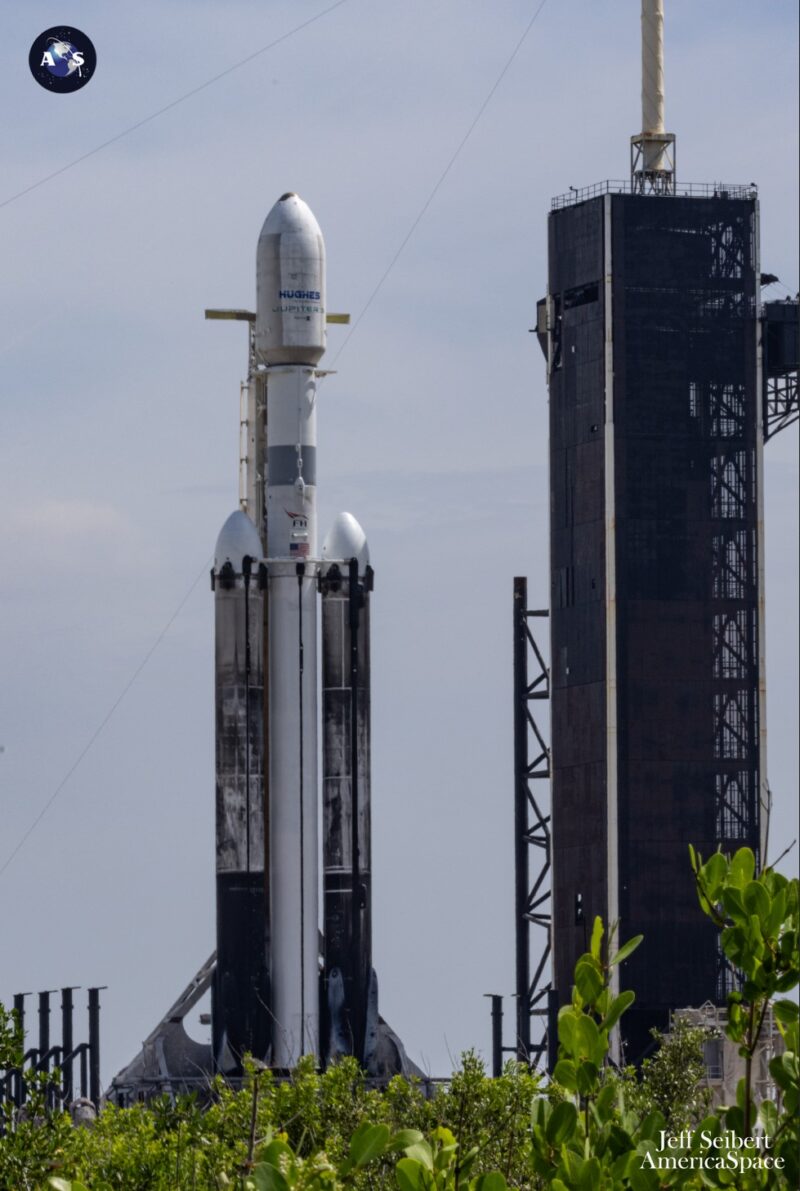
Efforts to fly missions still closer together have already been attempted earlier in 2023. Hopes of staging back-to-back pairs of flights just 35 minutes apart early in January and 53 minutes apart late in February ultimately came to nought, thanks to schedule difficulties, technical troubles and poor weather.
Last night’s scrub was unfortunate, for weather along the Space Coast pledged an 85-percent probability of acceptable conditions at T-0. That picture was expected to decidedly worsen on Thursday, with a risk of violating the Cumulus Cloud Rule, Thick Cloud Layers Rule and Anvil Cloud Rule producing only a 40-percent Probability of Go (PGo) condition for both of tonight’s missions.
After what the 45th Weather Squadron at Patrick Space Force Base described as “a brief respite” from storms on Wednesday, the arrival of a weak tropical wave was expected to significantly increase moisture and yield scattered showers and isolated thunderstorms along the coast. The Atlantic ridge should retreat eastwards tomorrow, offering a somewhat brighter picture—and a 65-percent PGo—for launch attempts on Friday night.
But SpaceX has successfully threaded needles through seemingly intractable weather in the past and tonight seems to be no exception. Flying first, if all goes well, will be seasoned veteran B1062, the third Falcon 9 core to reach a life-leading 15 launches.
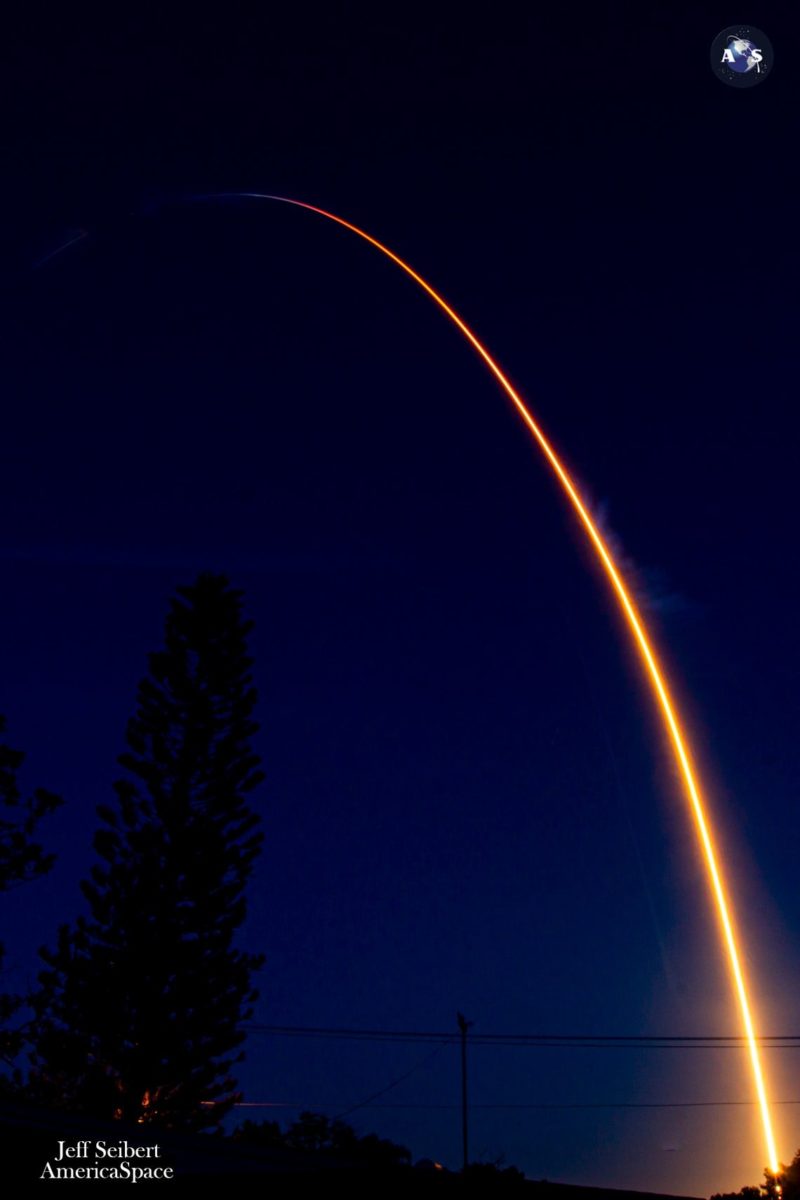
She will be laden with 22 downsized “V2 Mini” Starlinks, which boast three to four times greater “usable” bandwidth than their earlier iterations. “V2 Minis include key technologies—such as more powerful phased-array antennas and the use of E-Band for backhaul—which will allow Starlink to provide 4x more capacity per satellite than earlier iterations,” SpaceX explained. “Among other enhancements, V2 Minis are equipped with new argon Hall thrusters for on-orbit maneuvering.”
As a network, Starlink facilitates high-speed and low-latency internet provision across more than 60 sovereign nations and international markets in North and South America, Europe, Asia, Oceania and Africa. Just this month, Cyprus, Guatemala, Kenya, Malaysia and Malawi have signed up to the network.
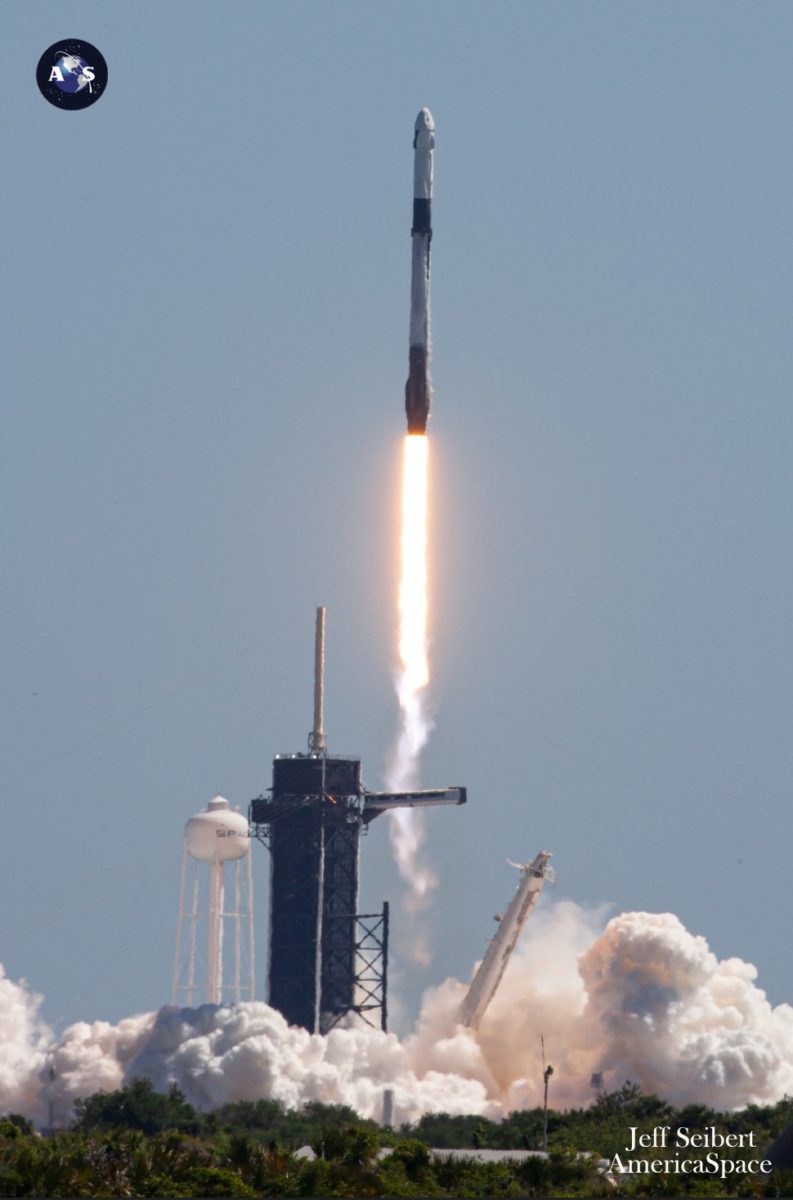
Florida-based intercity operator Brightline adopted Starlink on its trains earlier in 2023, the first passenger rail service in the world to do so. Additionally, El Salvador’s Ministry of Education has begun integrating Starlink capability into its schools to help close the digital divide between urban and remote rural communities and 50 Rwandan schools are now connected via Starlink’s high-speed internet service.
Following launch, B1062 will return to alight on the deck of the Autonomous Spaceport Drone Ship (ASDS), “A Shortfall of Gravitas”, which put to sea out of Port Canaveral last weekend. And the Merlin 1D+ Vacuum engine of the Falcon 9’s second stage will execute a standard six-minute “burn” to deliver the 22 Starlinks aloft, with deployment scheduled to occur 65 minutes and 17 seconds after liftoff.
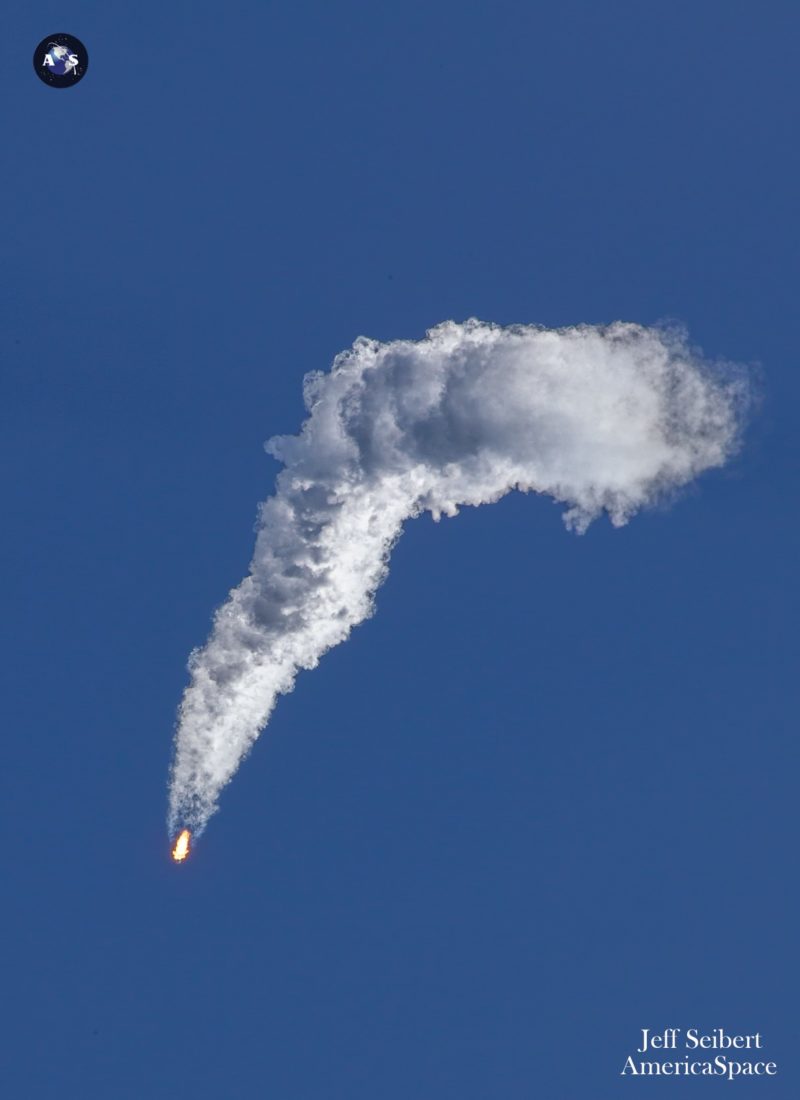
Less than an hour later, the mammoth Heavy will rise from Pad 39A, pummeling the Florida ground with 5.1 million pounds (2.3 million kilograms) of thrust, powering uphill under her 27 Merlin 1D+ engines. The B1064 and B1065 side-boosters—both making their third launches, having supported two prior Heavy missions in November of 2022 and last January—will separate and return to synchronized touchdowns on Landing Zones (LZ)-1 and 2 at the Cape, touching down seven minutes and 34 seconds after liftoff.
Meanwhile, the single Merlin 1D+ Vacuum engine of the Heavy’s second stage will perform three burns: a standard six-minute firing, followed by two others, later in the ascent—one running for 90 seconds, the other just shy of a half-minute—to pre-position the heavyweight Jupiter-3 Ultra-High-Density Satellite (UHDS) for deployment. The satellite, which represents the largest and heaviest geostationary communications satellite yet lofted by the Heavy, is set to be released into space three hours and 28 minutes into flight.
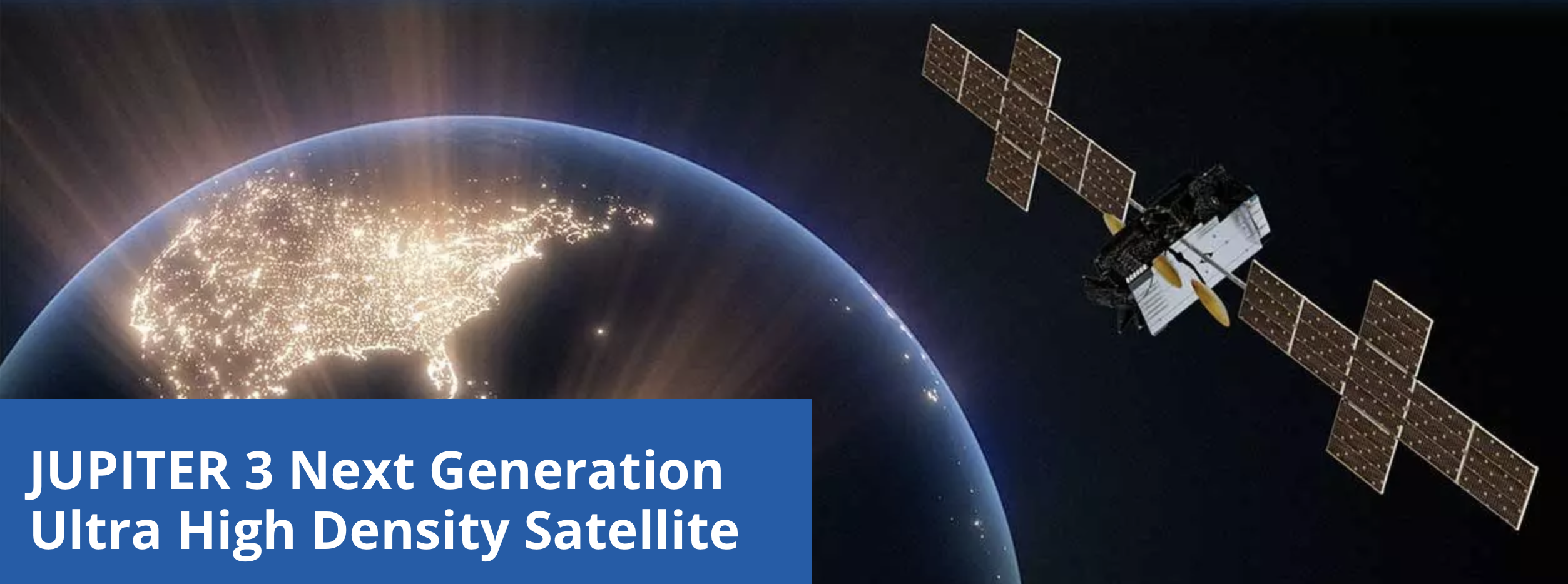
Weighing 20,000 pounds (9,200 kilograms), the Jupiter-3 is flying on behalf of Inverness, Colo.-headquartered EchoStar, Corp. Built by Maxar and set to be redesignated EchoStar-24 when in orbit, it will showcase miniaturized electronics, solid-state amplifiers and a high-efficiency antenna architecture for “more concentrated capacity over high-use areas”.
The satellite’s high-efficiency Ka-band antennas will enable data-throughput rates of up to 500 gigabits per second. It departed Maxar’s facility in Palo Alto, Calif., late last month and arrived at the Cape on the final day of June.




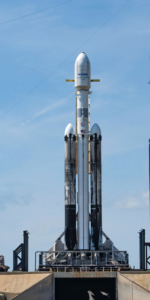
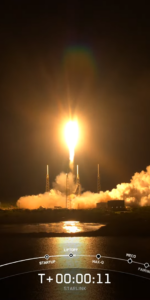
One Comment
One Ping
Pingback:50th Falcon Mission of 2023 Flies, Falcon Heavy Realigns for Friday Night Launch - AmericaSpace